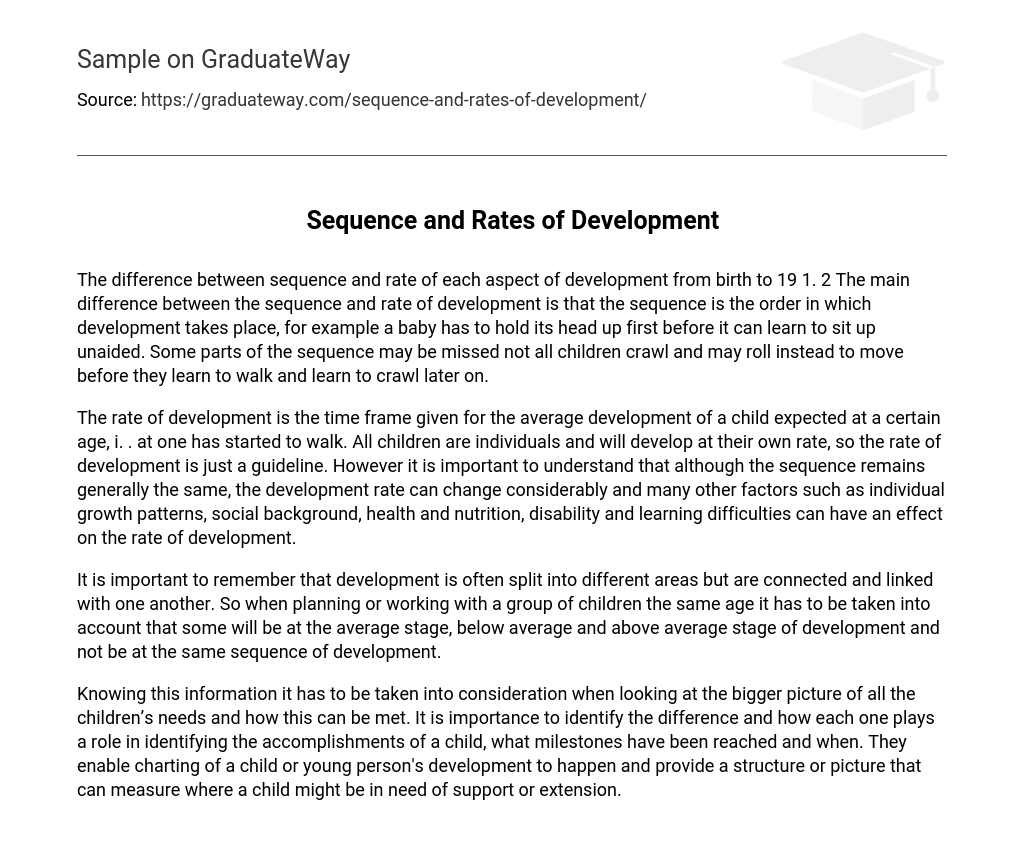The difference between sequence and rate of each aspect of development from birth to 19 1. 2 The main difference between the sequence and rate of development is that the sequence is the order in which development takes place, for example a baby has to hold its head up first before it can learn to sit up unaided. Some parts of the sequence may be missed not all children crawl and may roll instead to move before they learn to walk and learn to crawl later on.
The rate of development is the time frame given for the average development of a child expected at a certain age, i. . at one has started to walk. All children are individuals and will develop at their own rate, so the rate of development is just a guideline. However it is important to understand that although the sequence remains generally the same, the development rate can change considerably and many other factors such as individual growth patterns, social background, health and nutrition, disability and learning difficulties can have an effect on the rate of development.
It is important to remember that development is often split into different areas but are connected and linked with one another. So when planning or working with a group of children the same age it has to be taken into account that some will be at the average stage, below average and above average stage of development and not be at the same sequence of development.
Knowing this information it has to be taken into consideration when looking at the bigger picture of all the children’s needs and how this can be met. It is importance to identify the difference and how each one plays a role in identifying the accomplishments of a child, what milestones have been reached and when. They enable charting of a child or young person’s development to happen and provide a structure or picture that can measure where a child might be in need of support or extension.





